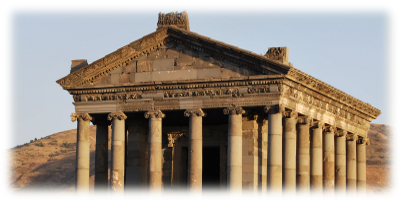
Taken from:
....
Edwin M. Yamauchi, states, “Though we cannot uncritically accept all the stories which ascribed a Near Eastern inspiration for the various Greek philosophers of Ionia, a careful study of both the historical situation and of the respective texts of the west and of the east, convinces M. L. West that the traditions of such borrowing are sound in the case of the following 6th-cent. BC philosophers: Pherecydes, Anaximander, Anaximenes, and Heraclitus” (M. L. West “Daniel and Contacts between the Aegean and the Near East Before Alexander,” EQ 53.1 [1981]: 47).
Greece and Babylon: Early Contacts between the Aegean and the Near East (Grand Rapids: Baker, 1967), 85;
Persia and the Bible (Grand Rapids: Baker, 1996), 379–94; “Greece and Babylon Revisited,” in To Understand the Scriptures: Essays in Honor of William H. Shea (David Merling; Berrien Springs, MI: Institute of Archeology/Horn Archaeological Museum, 1997), 129–55;
Peyton Randolph Helm, “ ‘Greeks’ in the Neo-Assyrian Levant and ‘Assyria’ in Early Greek Writers,” (Ph.D. diss., University of Pennsylvania, 1980);
M. L. West, The East Face of Helicon: West Asiatic Elements in Greek Poetry and Myth (Oxford: Oxford University Press, 1997); Early Greek Philosophy and the Orient (Oxford: Clarendon Press, 1971);
Robert Mondi, “Greek Mythic Thought in the Light of the Near East,” in Approaches to Greek Myth (ed. L. Edmunds; Baltimore: Johns Hopkins University Press, 1990), 142–98.
....
....
And from: http://www.flipkart.com/orientalizing-revolution-walter-burkert-margaret/067464364x-o3w3fcct1c
Book: The Orientalizing Revolution: Near Eastern Influence On Greek Culture In The Early Archaic Age
The rich and splendid culture of the ancient Greeks has often been described as emerging like a miracle from a genius of its own, owing practically nothing to its neighbors. Walter Burkert offers a decisive argument against that distorted view, replacing it with a balanced picture of the archaic period "in which, under the influence of the Semitic East, Greek culture began its unique flowering, soon to assume cultural hegemony in the Mediterranean". Burkert focuses on the "orientalizing" century 750-650 B.C., the period of Assyrian conquest, Phoenician commerce, and Greek exploration of both East and West, when not only eastern skills and images but also the Semitic art of writing were transmitted to Greece. He tracks the migrant craftsmen who brought the Greeks new techniques and designs, the wandering seers and healers teaching magic and medicine, and the important Greek borrowings from Near Eastern poetry and myth. Drawing widely on archaeological, textual, and historical evidence, he demonstrates that eastern models significantly affected Greek literature and religion in the Homeric age.
The splendid culture of the ancient Greeks has often been described as emerging like a miracle from a genius of its own, owing practically nothing to its neighbors. Walter Burkert offers a decisive argument against that distorted view, pointing toward a balanced picture of the archaic period "in which, under the influence of the Semitic East--from writers, craftsmen, merchants, healers--Greek culture began its unique flowering, soon to assume cultural hegemony in the Mediterranean.

No comments:
Post a Comment